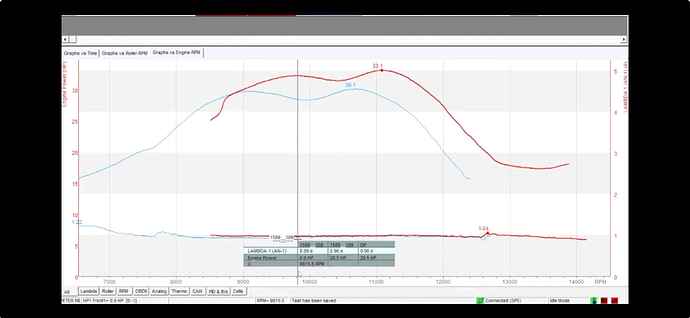Hi
Any one tested the new Rotax cylinder for 2024, i know they claim it wont give any performance, but i dont really trust that.
I’m not using Rotax but I’ve just read the same question on reddit and looks like it may be slower.
I heard it gives 1 hp more
Any updates on how the new cylinder compares and what has actually changed?
Same old story…
I started karting in rotax back in 2005. Every year the new cylinder was a couple of tenths or a second. They should be lapping quicker than a division one superkart by now ![]()
HUGE difference in area under the curve. That’s truely massive.
I’d love to know more details on how optimized each of the tests were. Ie jetting, squish, base gasket thickness/port timing.
But, Derek knows his stuff so I’m inclined to believe there’s at least some advantage with that newer cylinder.
This should go over like a lead balloon if it’s anything like the EVO went.
Up here in parts of Western Canada, where Rotax is still “the thing”, the consensus is that, ON AVERAGE, the new Senior cylinder is probably worth about 1 hp over the previous cylinders - and that’s over a pretty big area under the curve, as shown on the dyno sheet. Now, I know of real good older cylinders where people have seen maybe .25 hp gains on dynos by converting to the new cylinder.
A good older cylinder in Junior Max-spec is reportedly about the equivalent of a new cylinder with the average new cylinder being slightly better than the average old one. It’s supposed to be like that in DD2 as well.
In Mini and Micro spec, at first, the new cylinder was generally viewed as slower than the BEST of the older cylinders. All big events require the new cylinder in these classes only, because they want to weed out the old super Micro and Mini cylinders. But as dyno work has continued, I’ve heard that this gap has basically disappeared by finding power gains from the new cylinder with squish adjustments, etc - and by finding new cylinders that just work better in Micro and Mini spec, which are the classes that will probably always have the greatest amount of disparity because .2 hp just means more on a 10 hp motor, than on a 30 hp motor.
The main “advantage” to the new cylinders is that the parity, for now at least, appears to be better than with the older cylinders.
Now, this does nothing for the bottom end, where there are some motors that just make more power than others, no matter what cylinder you’ve got on it. It’s still Rotax, where you could get lucky and have a strong motor out of the box, or you might have to do lots of parts matching on the dyno to find something truly competitive.
It’s noticeable on the butt dyno and in data traces. I backed to backed mine at the beginning of the year just a day apart at the first round of Rotax races here. Certainly, pulls much hard to the ignition cross over and still pulls a bit harder after. Same squish, piston gap, and carb setup. I had just put a new piston and ring in before the cylinders were known to be coming. As similar as day-to-day conditions can be.
Mid-range felt the same to me, but that could just be my engine. I’ve heard other say it has more punch from 7k to 10k then up high.
Thinking to buy a new cylinder to upgrade my Evo. Does the A, AB, B, matter? Should I try to get the B because it is “biggest” or do they all make the same power? Finally, if anyone has tips on where to buy it cheapest, please let me know.
James, that was a huge CF. I think that Andy S got screwed and it destroyed the Rotax class in the US. That is after Andy S put all that work into making it a success. Also, it wasn’t broken, you just had to understand the carb. Lucky for me, I got out right before the EVO. Rotax was sending competitors updated parts to the track for the first race of the season. It was supposed to be fully developed and racing with the EVO in Europe and the UK for a year before being used in the States. I think the EU and UK race teams withheld information for competitive reasons on how to get it right from Rotax. As a result what was sent to the US was not fully race tested.
I agree 100%. It seemed like Rotax (unintentionally) damaged relationships with many importers with the advent of Evo. The communication was so out of sync. I recall one statement from Rotax was that the EVO did not make more power… yet the dyno curves provided by Rotax themselves showed here to be a noticeable difference between Evo and “prevo”. You could make the case of differences in dynos and whatnot, from from what I recall they both quoted the same SAE standard too…
Anyway, glad that the Evo transition is behind us now.
No, cylinder size will be in the noise. Rotax price is pretty much set. You aren’t going to find much of a deal unless you find a used one. Just call your closest dealer.

